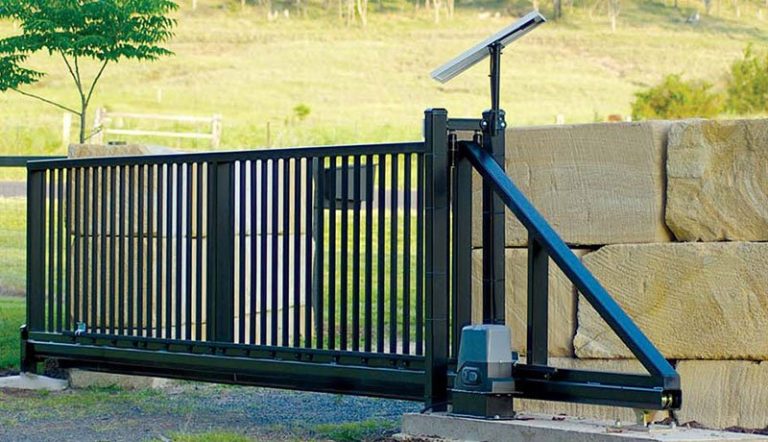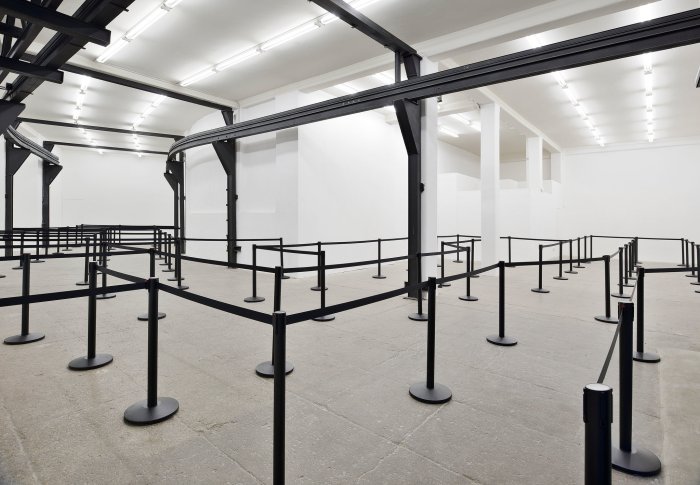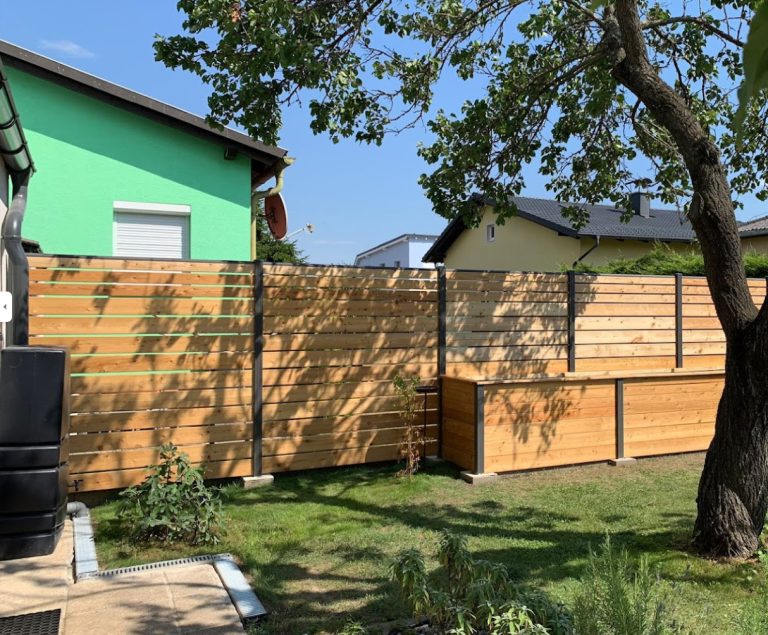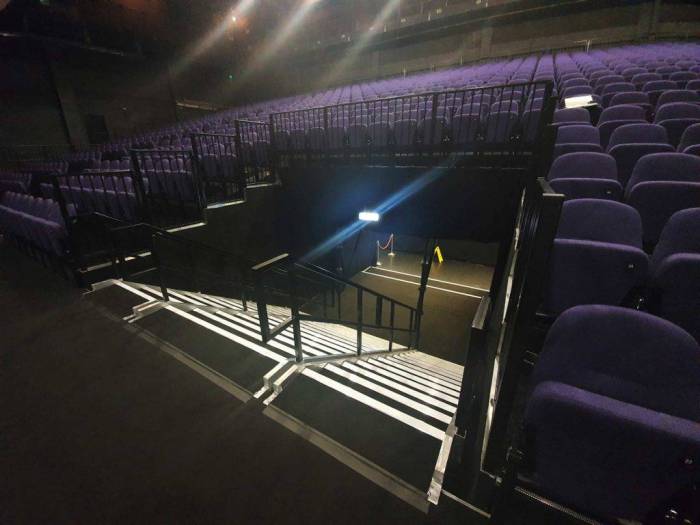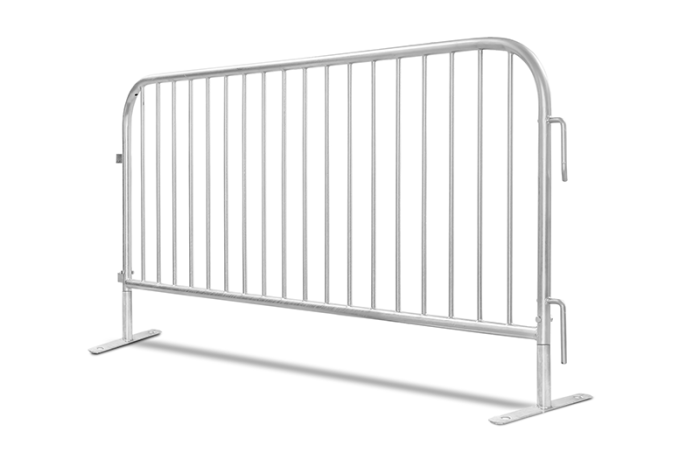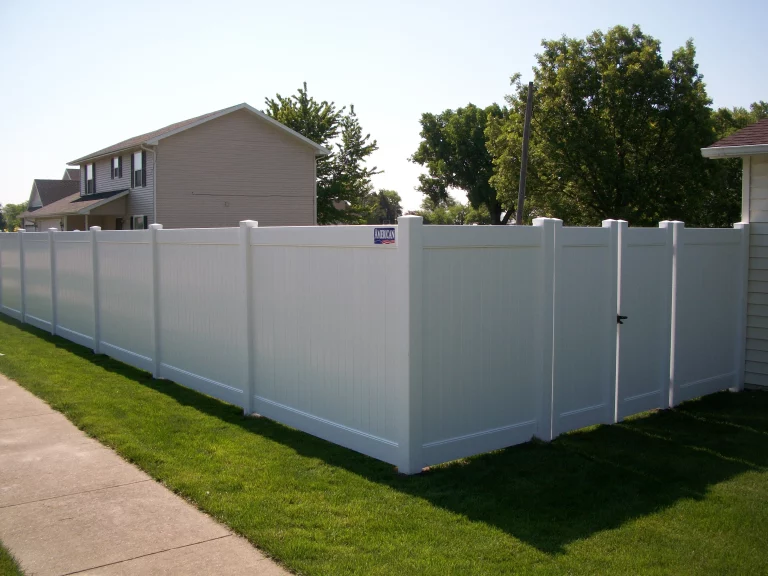Crowd Control Barricades A Practical Guide
Crowd control barricades are essential for managing large gatherings, ensuring safety, and directing pedestrian flow. From simple plastic barriers to sturdy metal structures, the choice of barricade depends on the event’s size, security needs, and budget. This guide explores the various types of barricades, their setup, safety regulations, cost considerations, and alternative crowd management techniques, helping you navigate the complexities of keeping crowds safe and organized.
We’ll delve into the practical aspects of deploying barricades effectively, covering everything from choosing the right materials and configurations to understanding relevant safety standards and minimizing potential hazards. We’ll also explore alternative crowd control methods and discuss the importance of accessibility and inclusivity in crowd management.
Types of Crowd Control Barricades
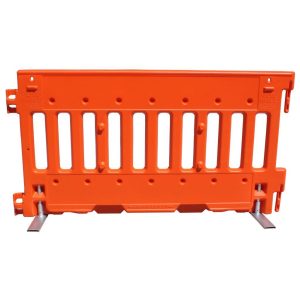
Choosing the right crowd control barricade depends heavily on the specific needs of the event or location. Factors like the expected crowd size, the duration of the event, and the level of security required all play a role in determining the most appropriate type of barricade. This section will explore the various options available, outlining their strengths and weaknesses to aid in making an informed decision.
Crowd Control Barricade Materials and Designs
Different materials offer varying levels of durability, portability, and security. The choice of material often dictates the overall effectiveness and longevity of the barricade. Let’s examine some common materials and their associated properties.
| Type | Material | Strengths | Weaknesses |
|---|---|---|---|
| Plastic Barricades | High-density polyethylene (HDPE) or similar plastics | Lightweight, easy to transport and set up, relatively inexpensive, stackable for storage, often brightly colored for high visibility. | Less durable than metal, can be easily damaged or broken under significant pressure, less secure than metal barricades, susceptible to weather damage (UV degradation). |
| Metal Barricades | Steel, aluminum | Highly durable and resistant to damage, provide a strong barrier, more secure than plastic barricades, can withstand significant force. | Heavier and less portable than plastic, more expensive, can rust or corrode (especially steel), potentially more dangerous in case of accidents due to their weight and rigidity. |
| Retractable Barricades | Metal frame with fabric or plastic barrier | Easy to store and transport, quick setup and takedown, can be easily adjusted to different lengths, relatively lightweight compared to solid metal barricades. | Less durable than solid metal or plastic barricades, the retractable mechanism can fail, fabric barriers can be easily damaged or torn, less secure than solid barriers. |
| Water-Filled Barricades | Plastic or metal containers filled with water or sand | Very stable and heavy, difficult to move or damage, cost-effective if water/sand is readily available. | Requires filling and emptying, heavy and difficult to transport when full, less aesthetically pleasing than other options, may be susceptible to freezing temperatures. |
Typical Uses of Different Barricade Types
The application of each barricade type is determined by its characteristics. For instance, lightweight plastic barricades are ideal for temporary events, while robust metal barricades are better suited for permanent installations or high-security situations.
Plastic barricades are frequently used for temporary crowd control at concerts, festivals, sporting events, and road closures. Their portability and low cost make them a practical choice for short-term applications. Metal barricades, on the other hand, are commonly found in permanent installations like construction sites, security checkpoints, and areas requiring high levels of security, due to their robust construction. Retractable barricades are frequently utilized in areas needing quick setup and takedown, such as entrances to buildings or temporary access points. Water-filled barricades are often preferred where extreme stability and resistance to movement are critical, such as during protests or demonstrations where there’s a risk of a crowd surge.
Deployment and Setup of Crowd Control Barricades

Setting up crowd control barricades effectively is crucial for ensuring safety and managing the flow of people at any event, from concerts to protests to sporting events. Proper deployment prevents overcrowding, facilitates efficient movement, and helps prevent potential hazards. Understanding the best practices and common mistakes can significantly improve the overall safety and success of your event.
Effective barricade setup depends heavily on understanding the specific event and expected crowd size. Different events demand different configurations, and careful planning is key to successful deployment.
Barricade Placement for Various Crowd Sizes and Event Types
The number and type of barricades needed will vary significantly based on the expected crowd size and the nature of the event. For smaller gatherings, a few lightweight, portable barricades might suffice. Larger events, like concerts or festivals, will require significantly more barricades, possibly including heavier-duty models and potentially even temporary fencing. Consider factors such as entry and exit points, potential bottlenecks, and designated areas for queuing or VIP access. For example, a small, controlled gathering might only require a few stanchions to guide pedestrian flow, while a large music festival would need extensive lines of heavy-duty barricades to manage large crowds and potentially separate different zones (e.g., general admission, VIP).
Step-by-Step Guide for Efficient and Safe Barricade Deployment
- Planning and Assessment: Before deployment, carefully assess the venue layout, expected crowd size, and the event’s specific needs. Determine the best locations for barricades to manage flow, create queuing areas, and secure VIP sections. This involves mapping out potential bottlenecks and high-traffic areas.
- Teamwork and Coordination: Deployment is best achieved with a team. Assign roles and responsibilities clearly to ensure efficient and coordinated setup. One person can be responsible for placing the barricades, another for ensuring they are securely locked, and another for overall supervision.
- Secure Placement: Ensure barricades are placed firmly and securely on level ground. Use appropriate weights or anchoring mechanisms, especially in windy conditions or on uneven surfaces. Avoid placing barricades on slopes or unstable surfaces.
- Spacing and Configuration: Maintain consistent spacing between barricades to create clear pathways and avoid overcrowding. The spacing should allow for comfortable movement while preventing unauthorized access.
- Clear Signage: Supplement barricades with clear and visible signage to guide crowd movement and direct attendees to specific areas. This helps prevent confusion and potential bottlenecks.
- Regular Inspection: Throughout the event, regularly inspect the barricades to ensure they remain secure and in good condition. Address any issues promptly.
Effective Barricade Configurations for Different Scenarios
Different scenarios call for different barricade setups. Consider these examples:
- Controlling Pedestrian Flow: A single line of lightweight barricades can effectively guide pedestrian traffic in a controlled manner. Consider using stanchions and ropes for gentler guidance in less crowded areas.
- Creating Queuing Areas: Multiple lines of barricades can create well-defined queuing areas, preventing congestion and ensuring fair access. Signage indicating the queue’s direction and approximate wait time is essential.
- Securing VIP Sections: Heavier-duty barricades, potentially combined with security personnel, can effectively secure VIP areas, restricting access to authorized individuals only.
Common Mistakes to Avoid When Setting Up Crowd Control Barricades
Avoiding these common mistakes can prevent accidents and ensure effective crowd management:
- Insufficient Planning: Failing to adequately assess the event’s needs and crowd size can lead to insufficient barricades or inappropriate placement, resulting in congestion and potential safety hazards.
- Improper Placement: Placing barricades on uneven surfaces or slopes, or failing to secure them properly, can lead to instability and potential accidents.
- Inadequate Spacing: Too little space between barricades can create bottlenecks, while too much space can leave gaps that are easily breached.
- Lack of Signage: Insufficient or unclear signage can confuse attendees and lead to chaotic movement, increasing the risk of accidents.
- Ignoring Weather Conditions: Failing to account for weather conditions, such as strong winds or rain, can lead to barricades being blown over or becoming unstable.
Safety Considerations and Regulations

Using crowd control barricades safely and effectively is crucial for preventing accidents and ensuring public safety. Improper use can lead to serious injuries or even fatalities, so understanding the potential hazards and adhering to regulations is paramount. This section articulates key safety considerations and regulations surrounding the deployment and maintenance of crowd control barricades.
Proper barricade placement and usage are essential to mitigate risks. Neglecting safety precautions can result in serious consequences. For example, insufficient spacing between barricades can lead to overcrowding and potential stampedes, especially in high-traffic areas or during emergency evacuations. Similarly, using damaged or improperly secured barricades increases the risk of collapse, potentially injuring those nearby. Furthermore, failing to account for environmental factors like uneven terrain or inclement weather can compromise barricade stability and safety.
Potential Hazards Associated with Improper Barricade Use and Placement
Improper barricade use presents several hazards. These include, but are not limited to, tripping hazards caused by uneven placement or improperly secured barricades; the risk of collapse due to overloading or damage; and the potential for injury from sharp edges or corners on damaged barricades. Additionally, inadequate spacing between barricades can create bottlenecks and congestion, leading to crowd surges and potential stampedes. Failing to adequately secure barricades to the ground, especially in windy conditions, can lead to them being blown over, causing injury or disrupting crowd flow.
Relevant Safety Regulations and Standards for Crowd Control Barricades
While specific regulations vary by location and jurisdiction, many areas have guidelines for crowd management and the use of barricades. These often address material strength, stability requirements, and visibility standards. For example, some regulations might specify minimum weight and material strength requirements for barricades used in high-traffic areas or events. Others may mandate the use of reflective tape or other high-visibility markings, particularly at night or in low-light conditions. It is essential to consult local and national safety regulations and standards before deploying any crowd control barricades. Failure to comply with these regulations could result in legal liabilities and penalties.
Importance of Regular Inspection and Maintenance of Barricades
Regular inspection and maintenance are vital for ensuring the continued safety and effectiveness of crowd control barricades. A damaged barricade poses a significant safety risk. Regular inspections should check for signs of wear and tear, such as cracks, dents, or loose connections. Any damaged or compromised barricades should be immediately removed from service and repaired or replaced. A proactive maintenance schedule will prolong the lifespan of the barricades and significantly reduce the risk of accidents. This could involve cleaning, lubrication of moving parts (if applicable), and routine checks for structural integrity.
Best Practices for Ensuring the Safety of Personnel and the Public
Before deploying barricades, it is crucial to conduct a thorough risk assessment of the area, considering factors such as terrain, expected crowd size, and weather conditions.
- Always use barricades that meet or exceed relevant safety standards and regulations.
- Ensure that barricades are properly placed and secured to prevent tripping hazards and collapse.
- Maintain adequate spacing between barricades to prevent overcrowding and bottlenecks.
- Use appropriate signage and lighting to enhance visibility, especially at night or in low-light conditions.
- Provide adequate training to personnel responsible for setting up, maintaining, and removing barricades.
- Regularly inspect barricades for damage and replace or repair any damaged units promptly.
- Develop and implement a comprehensive crowd management plan that includes the use of barricades as a key safety measure.
- Incorporate emergency procedures into the crowd management plan to ensure a safe and efficient response in case of an incident.
Cost and Maintenance of Crowd Control Barricades
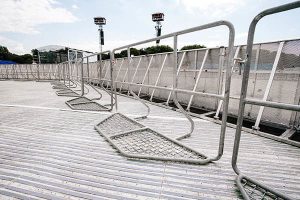
Choosing the right crowd control barricades involves careful consideration of not only their effectiveness but also their long-term cost. Initial purchase price is only one piece of the puzzle; ongoing maintenance and potential replacement costs significantly impact the overall budget. Understanding these factors allows for a more informed decision, ensuring you select the most cost-effective solution for your needs.
Initial Costs of Different Barricade Types
The initial cost of crowd control barricades varies dramatically depending on the material, features, and quantity purchased. Lightweight plastic barricades are generally the most affordable upfront, while heavier-duty steel or retractable barricades command a higher price tag. For example, a single plastic barricade might cost between $20 and $50, while a steel barricade could range from $100 to $300 or more, depending on its size and features. Retractable barricades, due to their more complex mechanisms, tend to fall at the higher end of the price spectrum. Bulk purchasing often provides discounts, making larger events more cost-effective in terms of initial investment.
Ongoing Maintenance Requirements for Each Type of Barricade
Maintenance needs differ significantly across barricade types. Plastic barricades are relatively low-maintenance, typically requiring only occasional cleaning and minor repairs for cracks or broken parts. Steel barricades, while more durable, are susceptible to rust and require regular cleaning and potential repainting to prevent corrosion. Regular inspection for bent or damaged components is also crucial. Retractable barricades require more meticulous maintenance due to their moving parts. This includes lubricating mechanisms, checking for wear and tear on belts or chains, and ensuring smooth retraction and extension. Neglecting maintenance on any type of barricade can lead to premature failure and increased replacement costs.
Factors Influencing the Long-Term Cost-Effectiveness of Various Barricade Options
Several factors contribute to the long-term cost-effectiveness of different barricade types. The frequency of use is a key consideration. Barricades used frequently for large events will require more frequent maintenance and potentially quicker replacement than those used only occasionally. The environmental conditions also play a significant role. Barricades exposed to harsh weather conditions, such as extreme temperatures or high humidity, will degrade faster and require more frequent maintenance or replacement. The lifespan of each barricade type also contributes to long-term costs. While steel barricades may have a longer lifespan than plastic ones, their higher initial cost and maintenance needs need to be factored in.
Cost-Benefit Analysis Template
To compare different barricade options effectively, a simple cost-benefit analysis is recommended. The following template can be adapted to suit specific needs:
| Barricade Type | Initial Cost | Annual Maintenance Cost | Estimated Lifespan (Years) | Replacement Cost | Total Cost over Lifespan |
|---|---|---|---|---|---|
| Plastic | $25/unit | $5/unit/year | 5 | $25/unit | $150/unit |
| Steel | $150/unit | $20/unit/year | 10 | $150/unit | $450/unit |
| Retractable | $300/unit | $30/unit/year | 8 | $300/unit | $540/unit |
Note: This is a simplified example. Actual costs will vary depending on factors such as quantity purchased, location, and specific maintenance requirements. Always obtain quotes from multiple suppliers before making a decision.
Alternative Crowd Control Methods
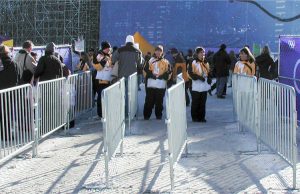
Beyond physical barricades, several alternative methods can effectively manage crowds, often used in conjunction with or as replacements for barriers. The choice depends heavily on the specific event, the size and nature of the crowd, and the potential risks involved. Careful consideration of each method’s advantages and disadvantages is crucial for ensuring safety and a smooth event.
Crowd Control Methods Comparison, Crowd Control Barricades
The following table summarizes various alternative crowd control methods, comparing their effectiveness and suitability across different scenarios. Remember that combining multiple methods often provides the most robust and adaptable crowd management strategy.
| Method | Description | Advantages | Disadvantages |
|---|---|---|---|
| Trained Personnel | Utilizing trained security personnel, police officers, or event staff to guide and direct crowds, manage flow, and address potential issues. This often involves clear communication and visible presence. | Highly adaptable to various situations, can provide immediate responses to incidents, offers personalized crowd management, effective for smaller to medium-sized crowds. | Can be expensive, requires extensive training and supervision, effectiveness depends heavily on personnel skill and responsiveness, may not be sufficient for very large or unruly crowds. |
| Signage and Wayfinding | Employing clear and strategically placed signage to guide crowd movement, indicate exits, restrooms, and other important locations. This includes directional arrows, informative posters, and digital displays. | Cost-effective, improves crowd flow and reduces congestion, provides self-service guidance, suitable for a wide range of events. | Ineffective for crowds ignoring instructions, requires careful planning and placement to ensure visibility and readability, may not be sufficient for emergency situations. |
| Crowd Psychology Techniques | Utilizing an understanding of crowd behavior to influence crowd movement and prevent dangerous situations. This may involve creating natural bottlenecks, using persuasive communication, or managing crowd density. | Can be highly effective in preventing crowd surges and stampedes, often complements other methods, relatively inexpensive when integrated into overall planning. | Requires specialized training and understanding of crowd dynamics, effectiveness depends on accurate assessment of crowd behavior, may not be effective in highly emotional or unpredictable situations. |
| Technology-Based Solutions | Employing technology such as CCTV cameras, crowd monitoring software, and communication systems to provide real-time crowd data and enable proactive management. | Provides real-time insights into crowd density and movement, enables quicker response to incidents, can help optimize crowd flow and resource allocation. | It can be expensive to implement and maintain, requires technical expertise to operate and interpret data, and raises privacy concerns if not handled responsibly. |
| Physical Barriers (Non-Barricade) | Using natural or temporary structures like fences, ropes, or stanchions to guide crowd movement and define specific areas. | More flexible and adaptable than rigid barricades, can be easily set up and removed, less obstructive than solid barriers. | May not be as robust as barricades, can be easily damaged or bypassed, less effective in controlling large or unruly crowds. |
Impact on Accessibility and Inclusivity

Crowd control barricades, while essential for safety and order, can inadvertently create barriers for people with disabilities and other marginalized groups. Careful planning and implementation are crucial to ensure inclusive crowd management practices. Failing to consider accessibility can lead to exclusion and create negative experiences for attendees.
Proper barricade placement significantly impacts the accessibility of events and public spaces. Poorly placed barricades can block pathways for wheelchair users, people with visual impairments, those with mobility aids, and individuals with other disabilities. This not only restricts their movement but can also create feelings of isolation and exclusion.
Barrier-Free Pathways and Accessible Routes
Designing accessible crowd control involves prioritizing the creation of clear and unobstructed pathways for people with disabilities. This includes ensuring sufficient width for wheelchair passage (at least 36 inches), providing ramps with appropriate gradients where steps are unavoidable, and marking accessible routes clearly with tactile paving or signage. For example, a large concert venue could designate specific accessible entrances with dedicated, wide pathways leading to designated viewing areas, clearly marked with signage and tactile indicators. These pathways should be maintained free from obstructions throughout the event.
Communication and Signage for Accessibility
Clear and accessible communication is paramount. Signage indicating accessible routes, restrooms, and services should be provided in large, easy-to-read fonts, and also in Braille and large print. Audio announcements can also guide people with visual impairments. For instance, announcements could include details about accessible entry points, the location of accessible restrooms, and any planned changes to crowd flow. Visual cues, such as color-coded maps or easily identifiable symbols, can also enhance wayfinding.
Inclusive Design Features for Barricades
While standard barricades might present challenges, incorporating inclusive design features can significantly improve accessibility. For example, barricades could include lowered sections or openings specifically designed to allow wheelchair users to pass through easily. Consideration should also be given to the materials used; barricades made of lighter materials are easier to maneuver around for those with limited strength. Using contrasting colors to make barricades more visible to people with visual impairments is another effective strategy.
Preventing Discrimination in Crowd Control
Crowd control measures should never discriminate against specific groups. This requires careful consideration of potential biases and the avoidance of practices that might disproportionately affect certain demographics. For instance, barricades should not be placed in a way that segregates or isolates particular groups, such as people of color or individuals from specific cultural backgrounds. The placement and design of barricades must be driven by safety needs, not by assumptions or biases about specific populations. Regular audits of crowd control plans, including feedback from disability advocates and community representatives, can help to identify and address potential discriminatory practices.
Closure

Effective crowd control is a multifaceted process that goes beyond simply placing barricades. By understanding the different types of barricades, their appropriate applications, and relevant safety regulations, you can significantly improve the safety and efficiency of any event. Remember to prioritize safety, accessibility, and inclusivity when planning your crowd control strategy. Careful planning and execution, using this guide as a resource, will ensure smooth and safe crowd management for any situation.
